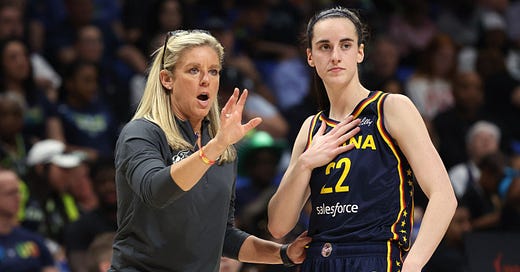Five Out: Fever say bye to Christie Sides, Natalie Williams gone in Las Vegas, and yes...the dunking discussion.
With the NCAA season looming, the WNBA decided they had a few more topline items to get us all talking. Some thoughts on the world of women's basketball for the week of October 28th.
Folks, we’ve made it. The WNBA is now in the mainstream in the sense that once the season ends there is still plenty of news being broken. A big shoutout to Annie Costabile of the Chicago Sun-Times who has absolutely owned the Sky/Sun/Fever coaching triangle this week. We’ll analyze some of the recent moves, what’s t…
Keep reading with a 7-day free trial
Subscribe to No Cap Space WBB to keep reading this post and get 7 days of free access to the full post archives.




